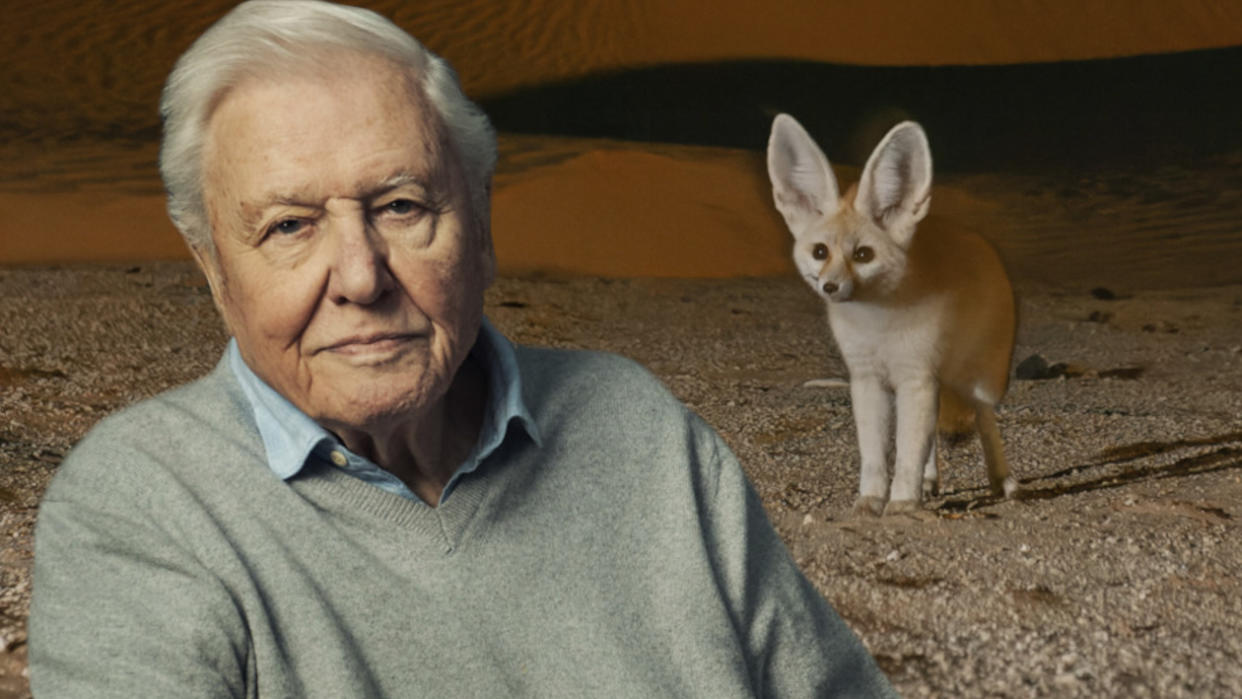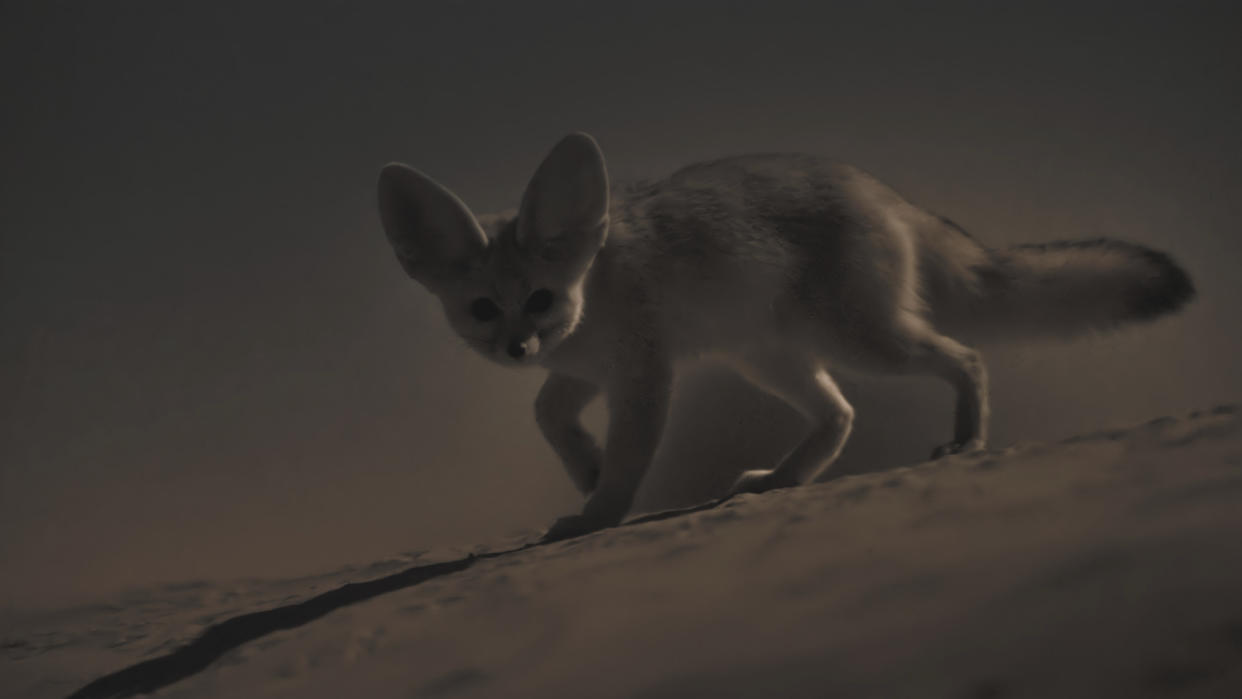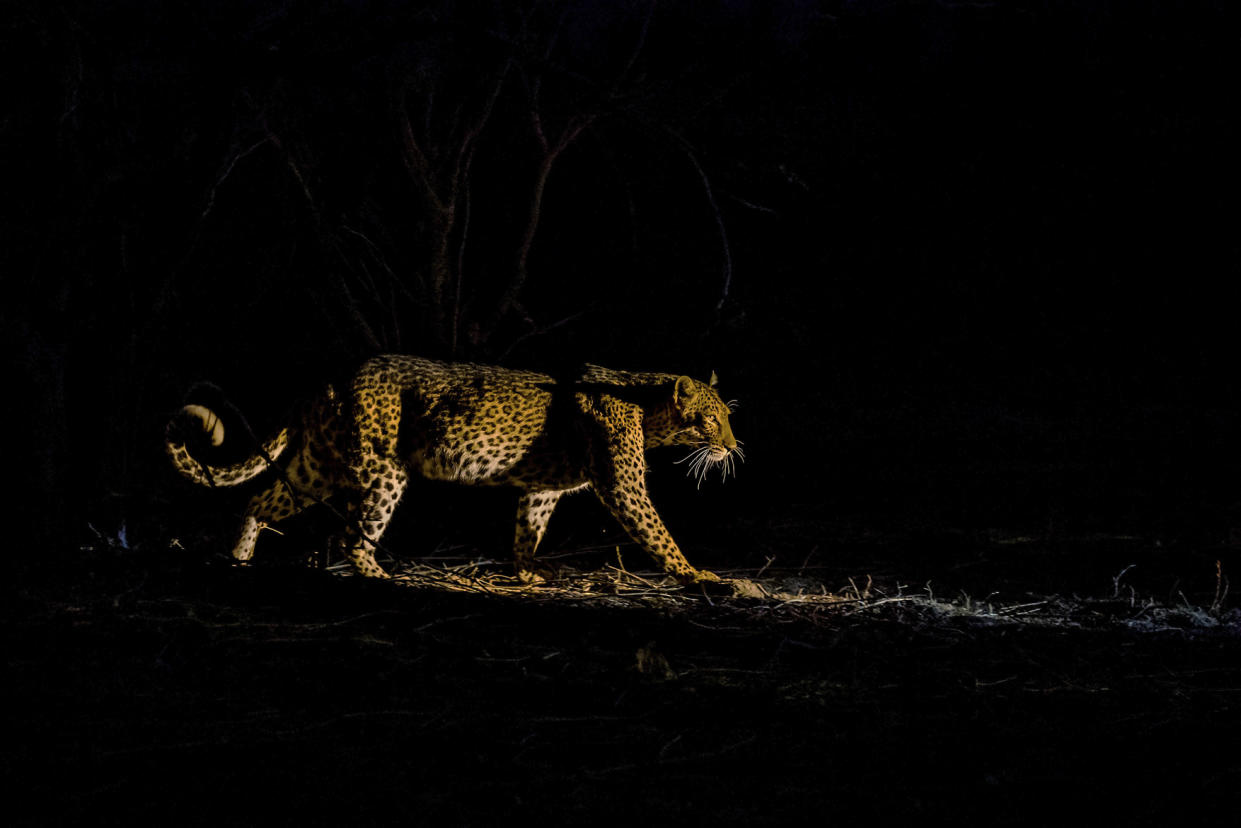David Attenborough's Mammals shows 'cruel' fate of desert foxes

What did you miss?
David Attenborough is just a few years away from his 100th birthday, but that doesn't mean he has stopped bringing amazing nature programmes to our screens. Mammals is his latest big-budget documentary series, with the talented team getting cameras into environments none of us have ever seen before.
The first episode aired on Sunday and one of the most impressive sequences explored the world of the ultra-shy species the fennec fox. The Sahara-dwelling critters are very rarely seen by humans, but their story ended tragically in the episode.
Who, what and why?

Mammals viewers got a rare insight into the hidden world of fennec foxes, thanks to the hard and patient work of the team behind the show. The creatures are almost entirely nocturnal and have ears so sensitive they could hear even the rustling of the crew's clothes miles away.
Remote cameras and drones were the answer. Over the course of months, the foxes became familiar with the crew and their devices, allowing them to shoot remarkable footage. However, there was a tragic end to all of this when the foxes disappeared, until the team found an old hunting camp, including the carcasses of the two foxes the crew had been following.
Attenborough explained in his narration on the show that, although some people target fennec foxes for meat or for the pet trade, the crew believed that these ones had been killed "more shockingly" for fun. Viewers, too, were upset at the fate of these beautiful animals.
#mammals brilliant programme once again from Attenborough.
But the end left me angry with regards the camp found with the Fennac Foxes they were trying to film having been killed by poachers.
Fkn humans. Hate them.
Those poor wee foxes. 😢😡— 🤘R4tser ラット 🐈⬛ (@R4tser) March 31, 2024
Sickening to know there are people who kill the fennec foxes for fun.😡
Still, respect to the photographers, production team and everyone else involved in the making of this new series.#mammals #BBC1— Estella (@SoulSista0323) March 31, 2024
So sad, why are some humans so cruel , those poor foxes #Mammals
— Liz (@Essenceofme3) March 31, 2024
"Here were the very foxes we had been hoping to bring to the screen; trapped, skinned and discarded," researcher Tom Parry wrote. "The delicate little paws that had been making those beautiful tracks in the sand severed and thrown aside next to cigarette butts, crisp packets and other litter."
Parry added: "I was overwhelmed by the sheer futility of it and was surprised to find myself succumb to tears. We’d come to love these little desert companions as they had slowly learnt to accept us."
What else happened on Mammals?

This first episode of Mammals, entitled 'Dark', followed creatures who live nocturnally and in some of the darkest environments on Earth. Of course, this made filming them very challenging, but there were some remarkable sequences in the show.
In one scene, viewers followed the mating life of armadillos. Meanwhile, we also visited the smallest land mammal ever seen — the Etruscan shrew — as it hunted through the undergrowth. There were also scenes of hyenas hunting at night and a journey into the reclusive life of one of the world's strangest animals — the naked mole rat.
Mammals continues on Sundays at 7pm on BBC One.
Read more:
Sir David Attenborough on why he believes some zoos can be 'justified'
Can someone be knighted twice? Sir David Attenborough receives rare honour
Jeremy Clarkson criticises David Attenborough's focus on climate change
Watch: Armadillo looks for love in Mammals
This article originally appeared on Yahoo TV UK at https://uk.news.yahoo.com/david-attenborough-mammals-cruel-fate-desert-foxes-120348924.html


